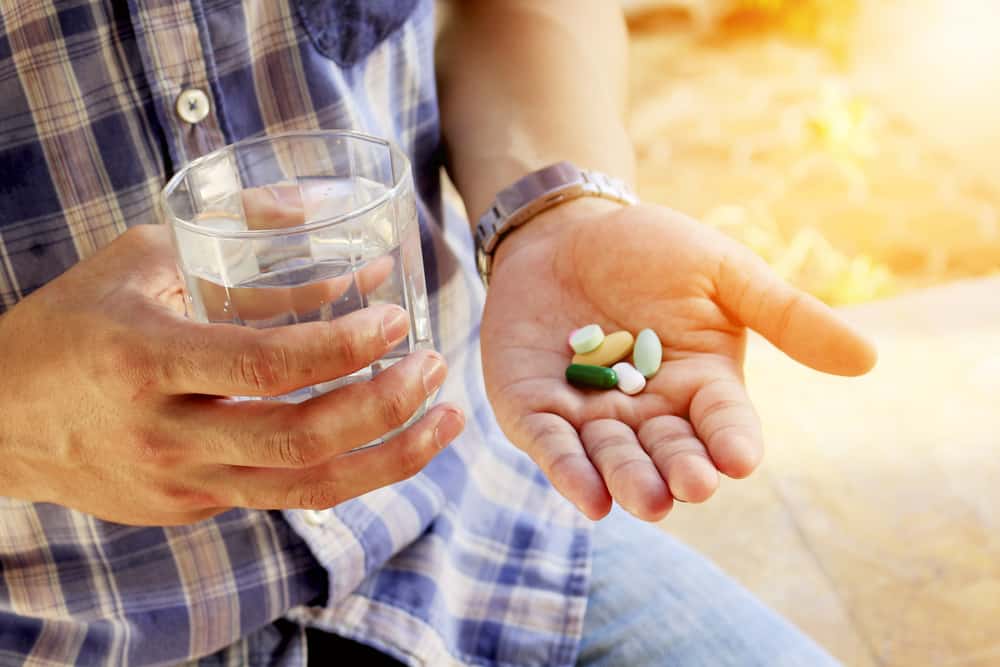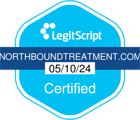Opioid abuse is a very serious public health problem in the United States. Drug addiction can affect anyone at any point in their life, regardless of age, gender, ethnicity, socioeconomic status, or geographic location. Prevention and prompt treatment at a drug rehabilitation center are keys to addressing the crisis, which is why, now more than ever, it’s crucial to know the facts about opioid abuse and addiction.
Northbound Treatment has been helping people recover from addiction for over 30 years. We’re dedicated to providing individuals and their families with the information they need to overcome substance abuse. Whether you suspect a close friend or family member is addicted to opioids or you’re seeking clarity about your own substance abuse, Northbound is here for you. Find the top opioid addiction facts and statistics below.
Most Drug Overdose Fatalities Involve Opioids
There were over 70,000 drug overdose fatalities in 2017 in the U.S., roughly two-thirds of which involved an opioid. The following year, there were closer to 67,000 overdose deaths. While the number of fatalities decreased by about 4% in 2018, opioids were involved in about 70% of cases1.
Synthetic Opioid Overdoses Are on the Rise
Nearly 450,000 people died from an opioid overdose from 1999 to 2018. This includes both prescription medications and illegally produced opiates, like heroin. While heroin overdoses decreased slightly in the last few years, synthetic opioid overdoses are on the rise2.
Between 2017 and 2018, there was a 10% uptick in synthetic opioid-related fatalities. According to the CDC (Centers for Disease Control and Prevention), more than 31,000 people died from synthetic opioid overdoses in 2018 alone. Many of these cases involved fentanyl, which appears to be present in more overdoses as heroin overdoses decline slightly2.
Fentanyl Is 50 to 100 Times More Potent Than Morphine
While pharmaceutical fentanyl was first synthesized in the 1960s, there’s been an increase in prescriptions in the last decade. One of the most alarming opioid abuse facts is that fentanyl is 50 to 100 times as strong as morphine3.
The exceedingly potent narcotic is prescribed to people experiencing severe pain. It can be administered intravenously to hospitalized individuals to alleviate pain associated with surgery, injury, childbirth, or serious illness. Fentanyl is often prescribed to cancer patients suffering from acute pain, in which case the drug is typically given in the form of wearable patches or lozenges. These prescriptions are sometimes misused or abused. However, a majority of recent fentanyl-related overdoses in the U.S. involved illegally manufactured fentanyl. In these instances, the narcotic is often mixed with other drugs, like cocaine and heroin3.
Heroin Overdoses Often Involve Other Substances
Opioids and opiates can be extremely dangerous and even lethal on their own. And yet, devastatingly, heroin overdoses often involve other drugs. Almost all heroin users also use at least one other substance, such as cocaine, alcohol, benzodiazepines, or other opioids4.
While overdose deaths involving heroin dropped by about 4% in 2018, the total annual deaths were still drastically higher than the previous decade. In 2010, 3,036 people died from heroin overdoses, which is only about one-fifth of the 14,996 fatalities recorded in 20184.
Nearly 200 Million Opioid Prescriptions Are Dispensed Each Year in the U.S.
Each year, almost 200 million opioid prescriptions are dispensed in the United States. The most commonly prescribed narcotics include hydrocodone (Vicodin), oxycodone (OxyContin and Percocet), morphine, oxymorphone, codeine, and fentanyl5.
Alabama is the highest-prescribing state with three times as many prescriptions per capita as Hawaii, the lowest-prescribing state. Research suggests that the underlying health status of a regional population doesn’t explain (or justify) higher rates of opioid pain medication prescriptions. In other words, people in Alabama don’t appear to need opioid medications more than those living in Hawaii5.
Tolerance vs. Dependence vs. Addiction
Tolerance happens when someone using opioids starts to experience reduced effects from the medication. This means they need to take more of the opioid painkiller to relieve pain or achieve the desired effect. Dependence is when the body can’t function normally without a dose of opioids. Without narcotics in their system, a person with opioid dependence will begin to experience opioid withdrawal symptoms.
Opioid addiction (or opioid use disorder) occurs when an individual is unable to control their drug use. At this point, they will typically start to struggle in various areas of life. A person battling drug addiction often faces problems at work, school, home, and within their personal relationships.
No One Is Immune to Prescription Opioid Addiction
As we mentioned, drug abuse can occur at any point in a person’s life, and no one is immune to opioid dependency and addiction. Any person who takes prescription painkillers has the potential to become addicted. About one out of every four patients who are prescribed long-term opioid therapy end up struggling with a dependence on the medication5.
Upwards of 11 million Americans report misusing prescription narcotics within the past year5. All too often, abuse leads to dependence, and sadly, once an addiction develops, opioids are incredibly challenging to quit.
Opioid Addiction Is an Epidemic
In the United States, opioid abuse is more than a public health crisis — it’s an epidemic. According to the National Institute on Drug Abuse, 128 people in the U.S. die each day from an opioid overdose. Roughly a quarter of people who receive prescription painkillers misuse them, and about 10% develop opioid use disorder (OUD)6.
What’s more, as many as 6% of those who misuse prescription narcotics end up transitioning to heroin. And about 80% of individuals addicted to heroin were initially dependent on opioid medication. When taking into account healthcare, treatment, and criminal justice costs, as well as lost productivity, the opioid epidemic creates an economic burden of nearly $80 billion a year6.
The Opioid Epidemic Is Rising Alongside the Coronavirus Pandemic
A recent report from the American Medical Association (AMA) Advocacy Resource Center indicates that, as the coronavirus pandemic continues to devastate communities throughout the nation, so does the opioid epidemic. California and 39 other states have reported increasing numbers of opioid-related fatalities, many of which involve fentanyl7.
The AMA also reports rising concerns over resources for individuals struggling with substance use disorder (SUD) and mental illness, urging governors and state legislatures to act accordingly. Part of the call to action is to allow more flexibility for telemedicine and prescription requirements. This means that OUD treatment may not require prior authorization for medications and other forms of care — at least temporarily7.
Though these guidelines make it somewhat easier for healthcare providers to prescribe pain medications, they might also help some people get the care they need to overcome opioid addiction. In addition to a full continuum of care at our rehab centers, Northbound offers telehealth outpatient treatment for clients who may have a hard time commuting to our facilities in Orange County. Our HomeBound program has been operating since early 2016, so our staff is well-versed in providing online care that’s up to par with our in-person services.
Opioid Addiction Treatment in Orange County
While reading opioid addiction facts and statistics can be alarming, it’s important to reckon with the reality of the epidemic. The team at Northbound Treatment is well aware of the devastation caused by drug abuse, and we take the addictive and potentially deadly nature of opioids very seriously. That’s why we’re committed to helping clients not only get clean but achieve lifelong sobriety.
We offer an accredited residential detox program here in Orange County, where clients can overcome their physical dependence on opioids in a safe and comfortable setting. We also provide a wide range of addiction treatment services, including inpatient rehab, outpatient treatment, and ongoing recovery support. Additionally, we provide dual diagnosis treatment for those battling co-occurring mental health disorders.
Northbound Treatment offers accessible and affordable care to individuals from all walks of life. We’re an in-network provider for most insurance plans and can accommodate flexible payment options for any remaining costs.
If you’re ready to start treatment or are concerned about a loved one’s opioid use, we encourage you to get in touch with us as soon as possible. Call us at (844) 919-0403 or fill out our online form.
Interested in learning more? Explore our blog to find out more information on the difference between opioid vs opiate, the symptoms of opiate withdrawal, and the opioid withdrawal timeline.
External sources:
1. https://www.cdc.gov/mmwr/volumes/69/wr/mm6911a4.htm
2. https://www.cdc.gov/opioids/
3. https://www.drugabuse.gov/drug-topics/opioids/opioid-overdose-crisis











